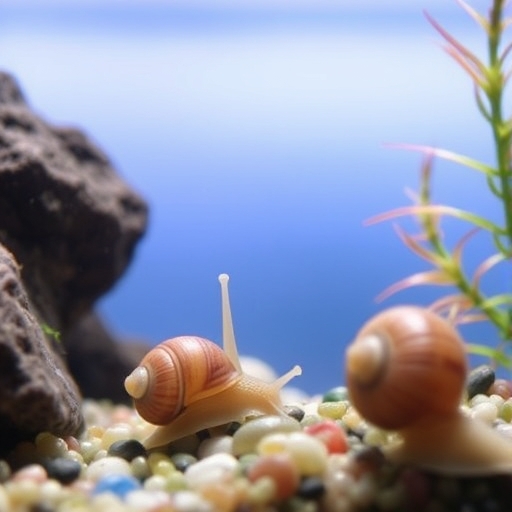How to Get Rid of Snails in Aquarium Naturally
Aquarium enthusiasts often face the challenge of managing unwanted snail populations. While some snails can be beneficial, such as helping to clean algae and detritus, an overpopulation can lead to issues in your aquarium’s ecosystem. If you’re looking to manage snail populations without resorting to harsh chemicals, this guide will provide you with natural methods to get rid of snails in your aquarium effectively.
Understanding Snails in Your Aquarium
Before diving into the methods of controlling snails, it’s important to understand why they are in your aquarium and their role in the ecosystem.
Types of Snails Commonly Found in Aquariums
-
- Mystery Snails: Known for their attractive shells and algae-eating capabilities.
- Nerite Snails: Beneficial algae eaters that do not reproduce in freshwater.
- Pond Snails: Often unwanted due to their rapid reproduction and potential to eat live plants.
- Malaysian Trumpet Snails: Useful for aerating substrate but can overpopulate.
Why Snails Can Become a Problem
-
- Rapid Reproduction: Snails can reproduce quickly, leading to a population explosion.
- Algae Overgrowth: Large populations can contribute to algae blooms, affecting water quality.
- Competition for Resources: Snails compete with fish and plants for food and nutrients.
Natural Methods to Control Snail Populations
There are several natural methods to control and reduce snail populations in your aquarium. Below are some effective strategies you can implement.
1. Manual Removal
One of the simplest and most direct methods is to manually remove snails from your aquarium.
Steps for Manual Removal:
-
- Inspect Your Aquarium Regularly: Check plants, decorations, and substrate for snails.
- Use a Net: Gently scoop out snails using a fine mesh net.
- Catch Them at Night: Snails are often more active at night, making them easier to catch.
2. Limit Food Supply
Overfeeding fish is a common cause of snail overpopulation, as excess food provides snails with ample resources to thrive.
How to Limit Food Supply:
-
- Feed Smaller Portions: Only provide as much food as your fish can consume in a few minutes.
- Remove Uneaten Food: Use a siphon to remove any leftover food after feeding.
3. Introduce Natural Predators
Introducing natural predators can help keep snail populations in check.
Possible Predators:
-
- Loaches: Many species, such as the Clown Loach, are known for their appetite for snails.
- Certain Fish: Fish like Betta or Gouramis may eat smaller snails.
- Crayfish: If compatible with your setup, crayfish can consume snails.
4. Use Trap Techniques
Setting up traps can help reduce snail numbers without harming other inhabitants.
Popular Trap Methods:
-
- Beer Trap: Place a shallow container filled with beer in your aquarium. Snails are attracted to the beer and will drown.
- Vegetable Trap: Submerge a piece of lettuce or cucumber overnight. Snails will gather on it, and you can easily remove them in the morning.
5. Maintain Healthy Water Conditions
Healthy water conditions can discourage snail reproduction and promote a balanced ecosystem.
Tips for Maintaining Water Quality:
-
- Regular Water Changes: Perform partial water changes weekly to keep nitrate levels low.
- Monitor pH Levels: Ensure pH is stable and suitable for your fish and plants.
- Keep Temperature Consistent: Sudden temperature changes can stress aquatic life and affect snail behavior.
6. Reduce Lighting Duration
Excessive lighting can promote algae growth, which provides food for snails.
Recommendations for Lighting:
-
- Limit Daily Light Exposure: Aim for 8-10 hours of light per day.
- Use a Timer: A timer can help regulate light exposure consistently.
7. Consider Plant Choices
Some aquatic plants can help control snail populations or are less attractive to snails.
Recommended Plants:
- Java Moss: Provides hiding spots for fish but is less appealing to snails.
- Anubias: Hardier and less likely to be eaten by snails.
- Cryptocoryne: Snails tend to avoid these plants.
Comparison of Natural Methods to Control Snails
| Method | Effectiveness | Cost | Time Required | Impact on Other Species |
|---|---|---|---|---|
| Manual Removal | Moderate | Low | High | Low |
| Limiting Food Supply | High | Free | Low | Low |
| Introducing Predators | High | Moderate | Moderate | Variable |
| Trap Techniques | Moderate | Low | Low | Low |
| Maintaining Water Quality | High | Moderate | High | Low |
| Reducing Lighting | Moderate | Free | Low | Low |
| Choosing Right Plants | Moderate | Moderate | Moderate | Low |
FAQs About How to Get Rid of Snails in Aquarium Naturally
Q1: Are snails harmful to my aquarium?
A1: While some snails can be beneficial, an overpopulation can lead to competition for resources and water quality issues.
Q2: Can snails reproduce in freshwater?
A2: Yes, many freshwater snails can reproduce rapidly, leading to population explosions if not controlled.
Q3: Do all fish eat snails?
A3: No, not all fish eat snails. It’s important to research specific species if you are considering using them as natural predators.
Q4: How can I prevent snails from entering my aquarium?
A4: Quarantine new plants and decorations, and avoid adding aquarium water from unknown sources.
Q5: How often should I check for snails?
A5: Regular inspections (weekly or bi-weekly) can help catch snail populations before they become a problem.
Conclusion
Managing snail populations in your aquarium naturally is not only effective but also promotes a healthier ecosystem for your aquatic life. By implementing a combination of the methods outlined in this guide, you can keep snail populations under control without resorting to harmful chemicals.
Remember, maintaining a balanced aquarium is key to the well-being of all your aquatic inhabitants. Happy fishkeeping!





